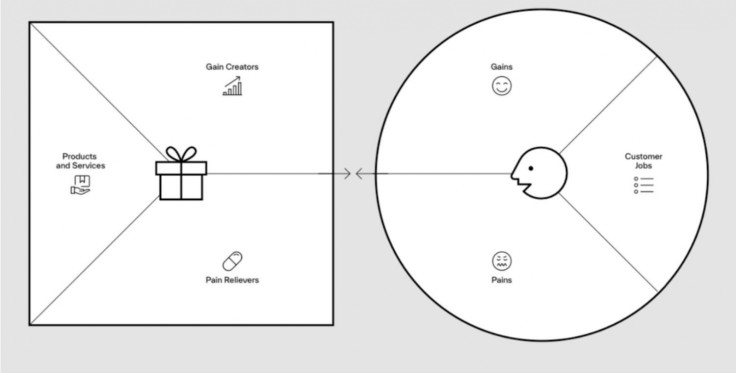
Alexander Blinov—Product Management Professional with more than 14 years of experience in Fintech, E-commerce, IT, and Telecommunications. He has a track record of launching sophisticated B2B products at companies like Osome, GFI Software, and Yandex.
How does one know if a new product is successful? At first glance, profit might seem like the most straightforward indicator of success. However, this method may not always reflect the product's true value. Are users genuinely satisfied with their experience of the product, or do they merely buy it because there are no alternatives? Would they switch to competitors if they had a better offer?
To determine the true value and success of a product, there is a concept known as Product Market Fit (PMF). PMF explores whether a product meets the customers' needs, maintains high quality, and if customers are willing to pay its price. In other words, does the product have a market with a sufficient amount of potential customers and money? Consequently, the product will be profitable in the long term and can thus be considered successful.
When does the PMF stage come?
The concept itself was introduced by the investor and entrepreneur Marc Andreessen in 2007. In doing so, he wanted to create an indicator that would show the viability of a new product—in other words, the stage when the product:
- Meets customers' needs
- Has real value for them
- Is more profitable than competitors in the market
If we consider the ideal product lifecycle, it would look like this:
- Idea
- Achieving PMF
- Growth
- Saturation
- Pivot or Death
The Idea stage is the primary development of a product and its main functionality, building a working infrastructure, and collecting information from the initial users. At this stage, the product either has no revenue or generates very little money. PMF stage is a cornerstone for future product success. The faster and smoother one gets through this stage, the more significant the boost for development will be.
How to Determine PMF
It's often said that if you're questioning whether your product has achieved Product Market Fit, the answer is probably no. If a startup is genuinely thriving, the attainment of PMF should be self-evident. I don't fully agree with this view—overall, I trust numbers more than someone's feelings.
With that in mind, let me guide you on how to determine if your product has indeed reached PMF. To do this, you need to assess the growth of three indicators:
- MAU (Monthly Active Users) / DAU (Daily Active Users)
- Retention
- Sean Ellis coefficient: this shows how many of your customers will be upset if they can no longer use your product
Based on my experience, I am positive that the last indicator is critical. For instance, during my tenure as Head of Product at Osome, we witnessed growth in MAU and retention rates, suggesting that users were indeed valuing the product. However, we couldn't definitively claim that our product had achieved Product Market Fit or delivered genuine customer value. The Sean Ellis test helped us understand how the market perceived our product.
To calculate the Sean Ellis coefficient, you need to conduct a survey among customers who have used your product on multiple occasions:
How would you rate your emotions if you no longer had the opportunity to use the product?
- You will be very disappointed
- You will be disappointed
- You will not be disappointed
- You are no longer using the product
The Sean Ellis coefficient is the percentage of customers who select the first answer option. If over 40% of customers would be very disappointed if they could no longer use the product—coupled with increasing metrics such as Monthly Active Users (MAU)/Daily Active Users (DAU) and retention rates—then we can say that it has reached PMF. It is crucial to subsequently track the Sean Ellis coefficient over time to understand that you are developing the product in the right direction.
How to Achieve PMF
The PMF stage comes when you have a specific solution to the client's problem, and this solution is better than the alternatives. Accordingly, to achieve PMF, you need to:
- Explore potential customers: define customer personas and define common patterns
- Identify their pains: conduct customer development interviews, formulate and prioritize the list of common problems
- Create a value proposition for clients: a useful tool for this process is the Osterwalder Value Proposition Canvas

I have to warn you right away—the path to achieving PMF can be risky and difficult. I can even compare it to a casino or sports betting:
- you propose a set of product features and bet whether customers appreciate it or not
- most likely, you will not "win" right away, and you will have to make several "bets"
- while making "bets" you are only losing money, but if you hit the bullseye, you will hit the jackpot
So, you proposed a set of functions and created a value proposition—what's next? To avoid wasting time and money, I advise you first to try to "sell" the product and then engage in development. Advertise the product and monitor the reaction of users. If you have no or very little response, suggest a new set of functions, create a new value proposition, and try again. When the results are satisfactory, create an MSP.
Please note that the MSP is not equal to the MVP.
- An MVP, or Minimum Viable Product, is a product with just enough features to address the core problems of its users but might be in its simplest form without offering extensive additional value. While customers can use it, they are not always willing to pay for it. If the MVP is a paid service and has a cheaper competitor, users might switch to that competitor.
- An MSP, or Minimum Sellable Product, on the other hand, is a product that offers enough value that users are willing to pay for. They prefer this product over competitors and are ready to spend money to use it.
From my experience, the key to quickly achieving PMF is teamwork. Developers should actively listen to product managers, who, in turn, must consider the insights and feedback from the development team. Flexibility, open lines of communication, and constructive criticism are essential components of successful teamwork.
What to Do After PMF
The stage before achieving Product Market Fit (PMF) is often the most stressful—the product may generate little to no revenue, the development prospects are still unclear, and the patience of top managers and investors is not endless. Thus, it is crucial to reach PMF before resources or stakeholder patience is exhausted.
Once PMF is reached, the frantic pace of developing new features can slow down. The focus should shift to stabilizing the product and business processes to ensure smooth progress in the strategic direction. Generally, investors are more willing to finance products with a confirmed PMF, so you don't have to worry about money.
Yet I wouldn't advise you to relax. There are numerous examples in business history, such as Blackberry smartphones and the MySpace social network, where brands with confirmed PMF failed to adapt to market shifts and lost their audience. That is why it is important to monitor new trends and competitors to maintain PMF regularly.









